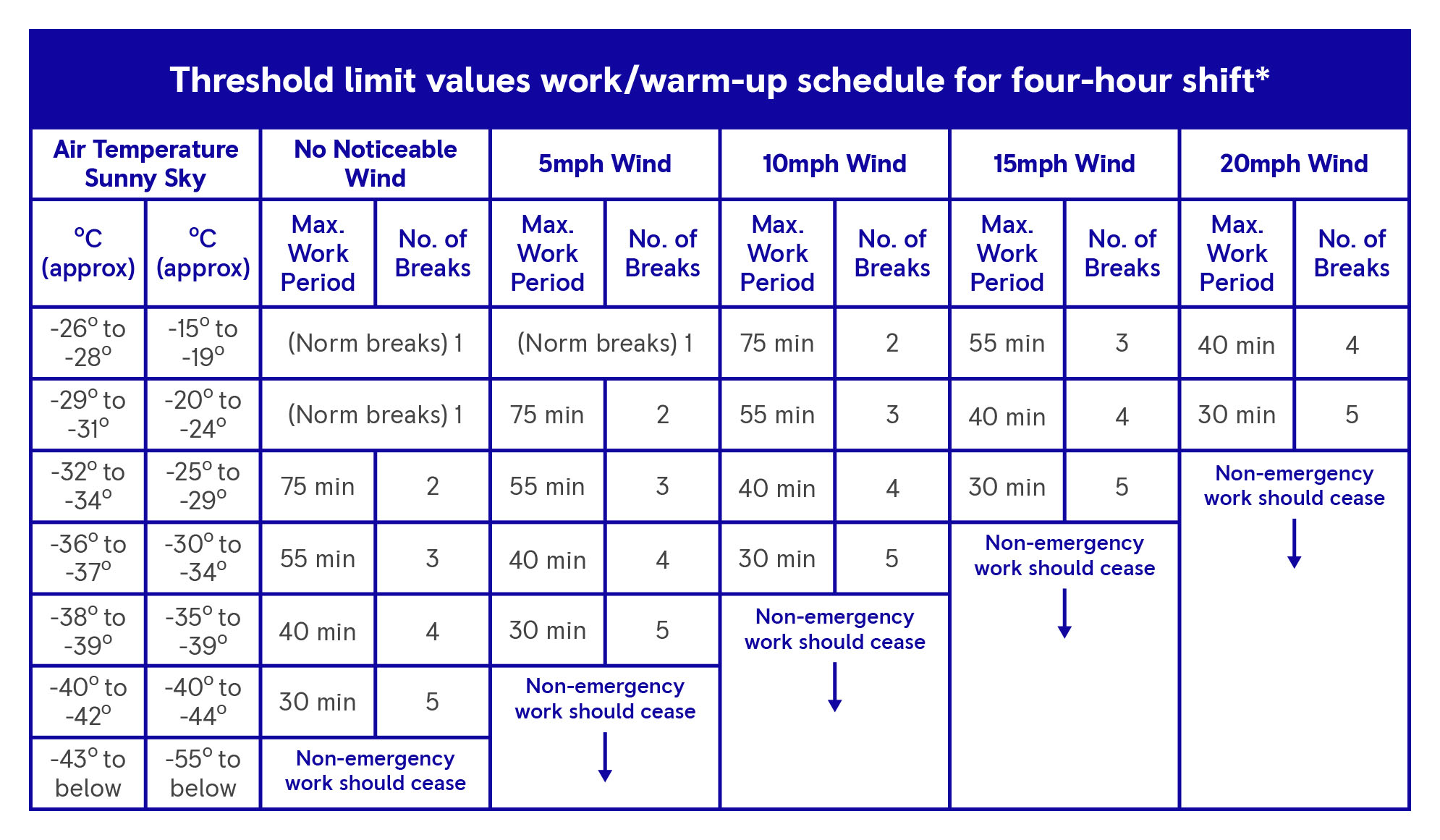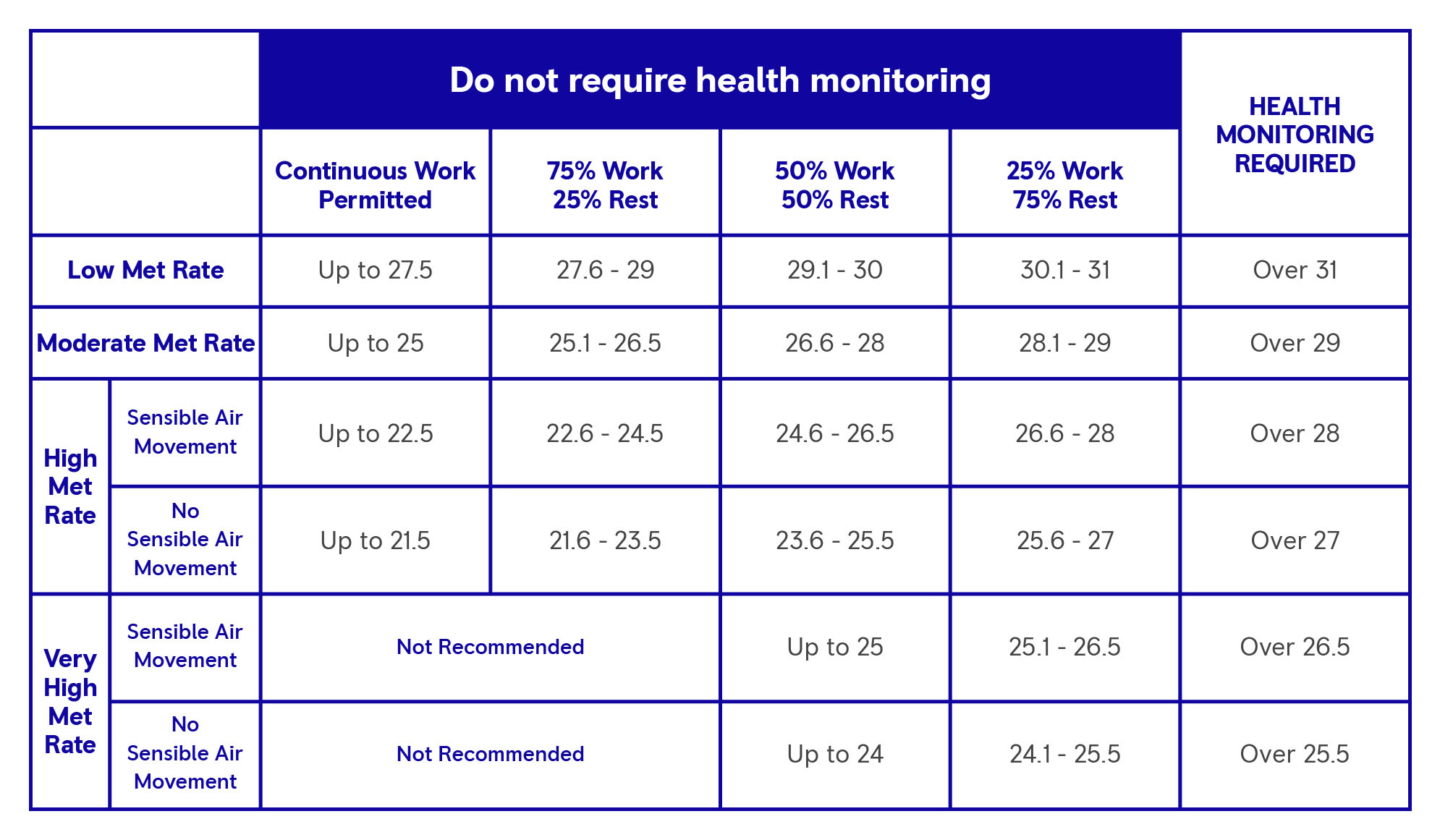Thermal stress can arise from working in hot or cold conditions. This can be affected by air temperature, air movement (wind speed), humidity (wetness), clothing, activity & rest schedules.
Excessive exposure to heat is referred to as heat stress, and excessive exposure to cold is referred to as cold stress. In a very hot environment, the most serious concern is heat stroke. In absence of immediate medical attention, heat stroke could be fatal. Heat exhaustion and fainting (syncope) are less serious types of illnesses, which are not fatal but interfere with a person’s ability to work.
At very cold temperatures, the most serious concern is the risk of hypothermia, the dangerous overcooling of the body. Another serious effect of cold exposure is frostbite or freezing of the exposed extremities such as fingers, toes, nose or ear lobes. Hypothermia could be fatal in the absence of immediate medical attention.
While symptoms can vary from person to person, the warning signs of heat stroke can include complaints of sudden and severe fatigue, nausea, dizziness, light-headaches, and may or may not include sweating. If a co-worker appears to be disorientated or confused (including euphoria), or has unaccountable irritability, malaise or flu-like symptoms, the worker should be moved to a cool location and seek medical advice.
Warning signs of hypothermia can include complaints of nausea, fatigue, dizziness, irritability or euphoria. Workers can also experience pain in their extremities (hands, feet, ears, etc), and severe shivering. Workers should be moved to a heated shelter and seek medical advice when appropriate.
All activities involving working in extreme temperatures should be thoroughly risk assessed before commencing. Further guidance can be found by contacting your HSE adviser.

